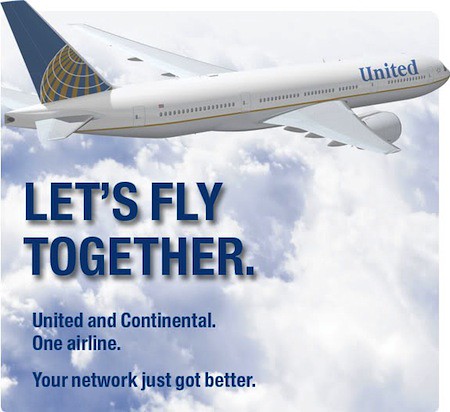
The Defining Moments series looks back at the biggest events of 2010 to see what we can learn from them here at P&P, to work better in our calling, in 2011 and beyond.
By DJ Edgerton (@wiltonbound)
In May 2010, two of the biggest players in one of the biggest and most controversial industries joined forces. United Airlines and Continental Airlines merged, a $3.2 billion deal that had started and stopped for several years before finally coming to fruition, as the parties involved hope to save $1 billion a year. Since then, flight routes have changed, customer fees have changed, union agreements have been negotiated and re-negotiated. There has been a lot of change, and its gone a lot deeper than what to call the frequent-flyer program.
This lesson for pharma is one weve learned before, but one which can always be a useful reminder: Even the biggest can merge.
Weve seen this over and over. Just last year alone, we saw it repeatedly, with the three great pairs of Merck and Schering-Plough, Pfizer and Wyeth, and Genentech and Roche. But would – could – any of the top ten pharmaceutical companies ever merge with each other? Many would say that its improbable at best, for a host of reasons, mainly related to finances and maneuverability.
But now, having seen two of the worlds largest airlines manage it – it looks a lot more reasonable.
J&J, Pfizer, Roche, GSK, Novartis, S-A, AZ, Abbott, Merck, Bayer: how would you combine them?
And, more to the point, once any two (or more) of them were to become one, what would happen then? Airline mergers are watched with fears over loss of competition, of course, but also with more industry-specific worries such as the prevention of strikes. The pharmaceutical industry would have the same general concerns about loss of competition in the marketplace for consumer prices, product choices, employee treatment and variability of the voices in the industry, but the main concern, I think, would be in drug-discovery pipelines.
Last month, all the fine folk at SoDA (the Society of Digital Agencies) and I pulled a prank on our industry peers by announcing the formation of Mutiny Worldwide, the global integration of 40 member agencies into the worlds largest digital agency network. We issued press releases. We promoted it one Twitter. And we had quite a bit of you fooled for a while there. But even though some of you clever cats called our bluff, at the very least, we got everyone thinking…what if? What if 40 of the world’s top digital agencies put our heads and our resources together to create one giant mega-agency?
There’s a lot of potential, but there’s also a lot of risk. Just because you have a lot more people working on the problem, if you havent done well before in separate groups, are you really going to do better just because youre now together? I have to admit, I have my doubts. But a mega-merger like the one were imagining could lead to amazing, groundbreaking things. It could create a mega-research organization: a center of scientific excellence bigger, more well-equipped and better funded than anyplace that has ever existed.
Of course, the whole point of a merger is to save money, so youd have to sell that to the shareholders first. But the idea of it is exciting, I have to say.
As is the idea of a mega-merger. Will it happen in 2011? I dont know. But I can say this: its not unthinkable anymore.